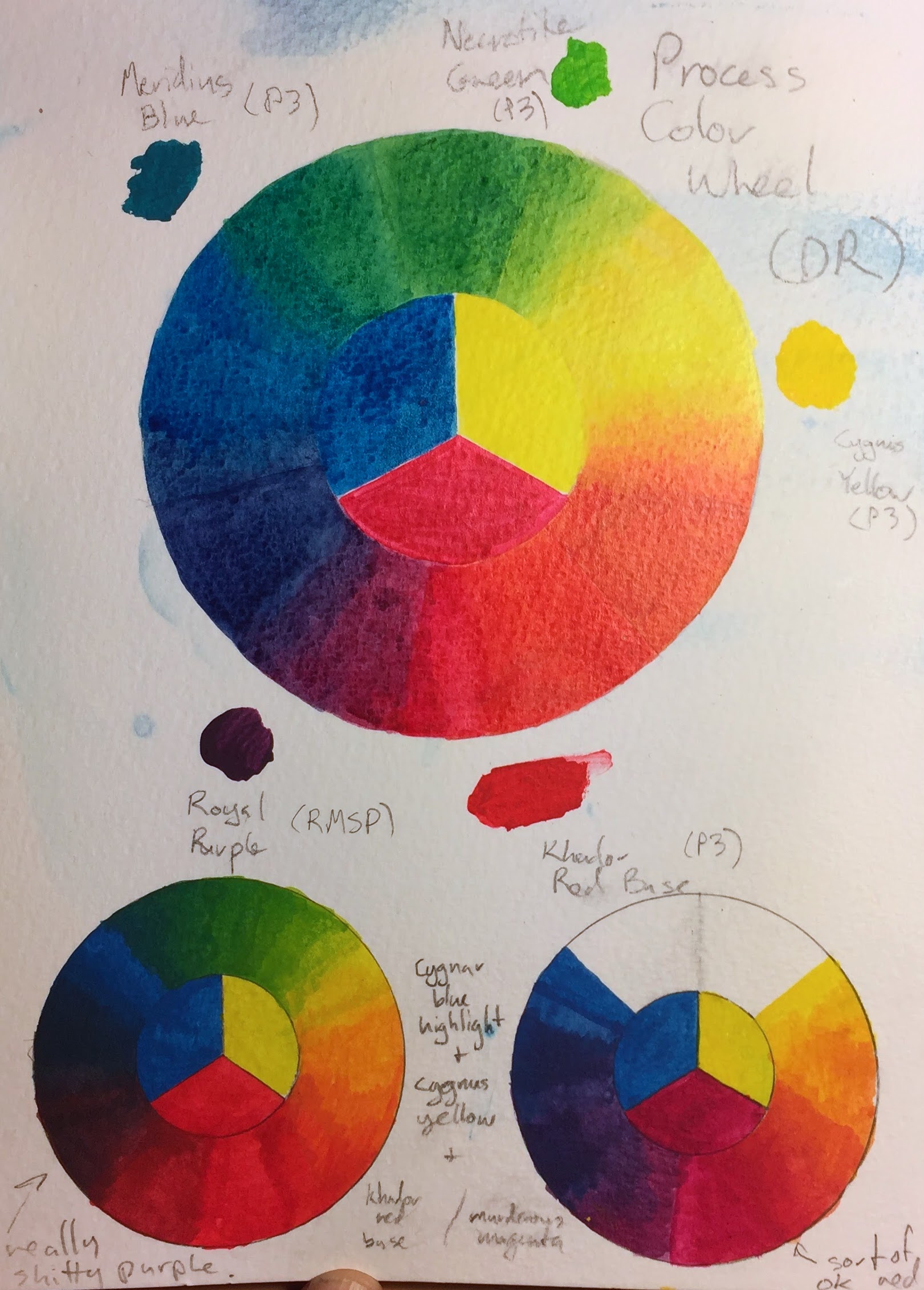You can find lots of color wheels on the internet, but I find that the most useful color wheel is the one you make yourself, out of the actual paints you use for painting. Making a color wheel with your paints is a good way to understand their properties for color mixing. It can be a good way to figure out which paints make better primaries for mixing more vibrant colors.
The large color wheel in the center is using process inks by Daler Rowney: cyan, magenta, and yellow. That set of colors is well known to printers as being capable of mixing vibrant colors of every hue.
On the bottom are two color wheels I made using P3 paints, which is the set of paints I use most. Both color wheels use the same blue and yellow primaries, Cygnar Blue Highlight and Cygnus Yellow, which I find work very well as primaries. (Since the blue and yellow primaries are the same, I omitted one of the green sections, since it would be the same as the other one.) For the color wheel on the left, I used Khador Red Base as the red primary, and for the color wheel on the right, I used Murderous Magenta.
As you can see, with Khador Red Base, it’s impossible to mix any decent purples, so the purple part of the color wheel looks like it’s been mixed with black. On the other hand, using Murderous Magenta as the red primary gives a quite nice set of purples, and still works well for making reds (by adding just a hint of yellow) and oranges. This is a good illustration of how magenta, not red, is a primary color (for mixing paints).
On the other hand, the red you get by mixing Murderous Magenta and Cygnus Yellow is not quite as bright as Khador Red Base. It’s a fiction that every color can be mixed from three primaries. No matter what set of three paints you use, you will find there are colors that are impossible to mix from your primaries. I’ll be sure to share my entries with the blog!
